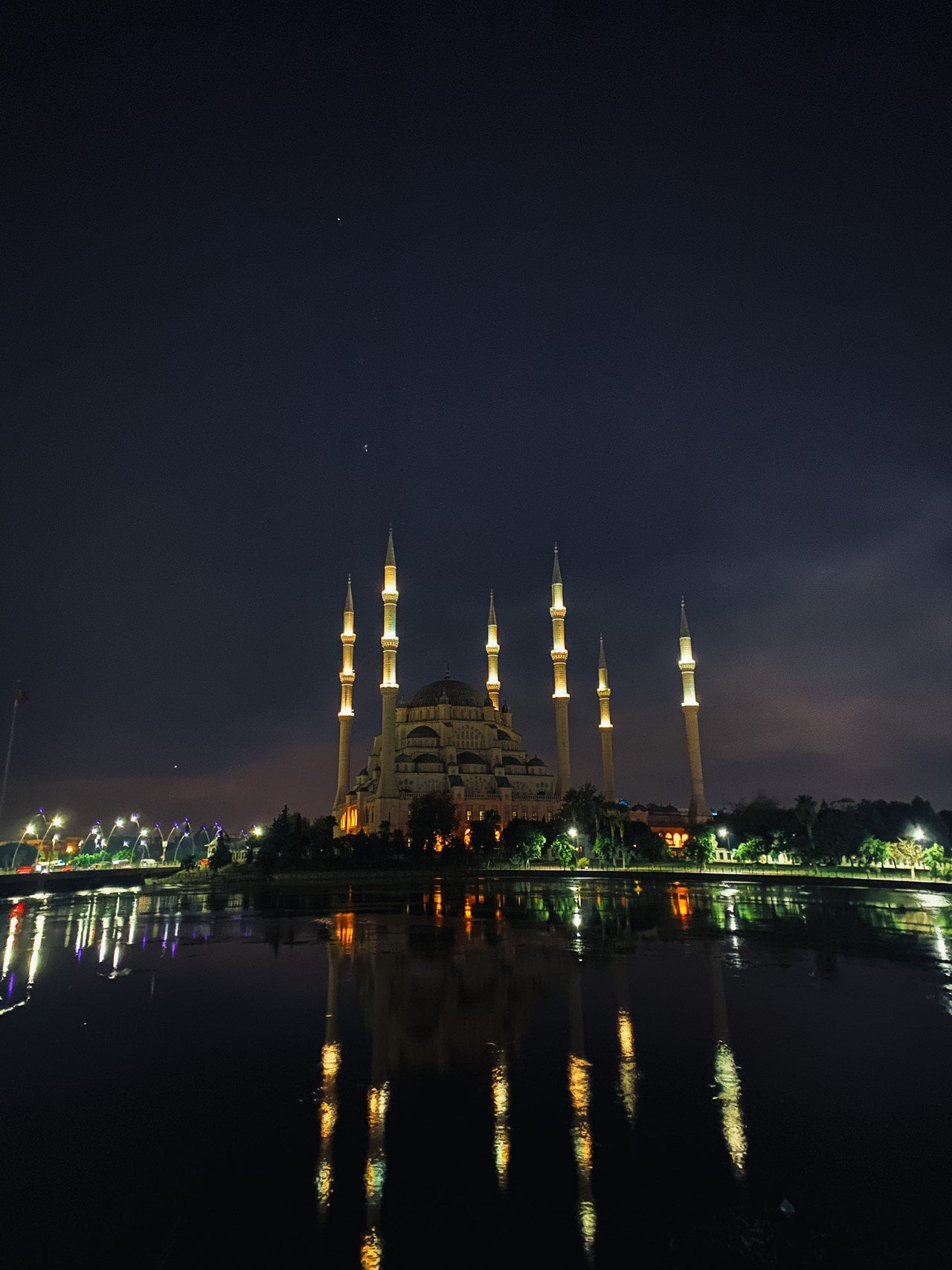Set in the heart of Cukurova (Cilician) Plain, Turkey’s fourth largest city, Adana is at the center of the rich agricultural region and the thriving textile industry. The Taskopru (Stone Bridge) built by Hadrian and repaired by Justinian, spends the River Seyhan which bisects the town; only 14 of the bridge’s original 21 arches still stand. Of interest of the city 16th century Ulu Mosque, the Eski Mosque, the Hasanaga Mosque, the 19th century clock tower and the old covered bazaar. The city of three museums, The Archaeological Museum, which displays locally excavated Hittite and Roman Remains, the charming Ethnography Museum, and the Ataturk Culture Museum should be included in a tour of the city. After a day of sightseeing you can sample Adana Kebab, a sensational spicy tube of ground meat. Local beverages include salgam a drink made from dark turnips and sira, a type of grape juice.
ENVIRON OF ADANA
North of the city the the Seyhan Dam and Lake have shady walks and giant tea gardens and restaurants creating a cool place to escape the heat. At sunset, look back toward the city to the peaceful, winding ruby river, lined with twinkling lights. The nearest beaches with accommodation facilities are at Yumurtalik, where an ancient harbor castle dominates the picturesque fisherman’s wharf, and at Karatas. Fishermen enjoy the scene, and the catch, it Camlik Park. Off the road from Adana to Iskenderun, near Yakapinar, lies Misis, a city which derived its wealth from its position on the Silk Route. There are several Roman ruins at the site, including a beautiful fourth-century), mosaic depicting Noah’s Ark and the animals. Further along the road are the impressive ruins of the Yilanlikale Castle, atop a rocky peak that dominates the Ceyhan River. South of Yilanlikale, in the Sirkeli region, a somewhat weathered Hittite relief marks Muvattalish’s stop here on his way to Egypt. North of Ceyhan lies the village of Dilekkaya, (the ancient Anavarza), where you can view the ruins of a Roman-Byzantine city and an impressive castle. The small museum at the site has two particularly fine mosaics from Roman baths. Osmaniye, inland from the head of the Gulf of Iskenderun, is the ‘turn-off for two more ancient sites. The road to Karatepe takes you to the ancient Roman city of Castabala, where a colonnaded street, theater, baths and a fortress on the hill evoke a bygone era. At the Karatepe National Park, (the neo-Hittite site), the remains of the summer residence of Kino, Asitawada, tablets bearing Hittite and Phoenician inscriptions and open air museum with fine bas-reliefs reveal the importance and astonishing aesthetic of this pre-historic civilization. This region was much fought over during the Crusades and the impressive fortress at Toprakkale was for a time held by the Christian armies. Further back in history, Alexander the Great defeated Darius III and the Persian army in 333 B.C. at the Plain of Issos (Dortyol). Today this area is covered with large citrus groves which supply Turkey with oranges, tangerines and lemons. At Yakacik (Payas), off the highway that outlines the coast of the Gulf of Iskenderun, the splendid 16th-century Sokollu Mehmet Pasa Complex includes a mosque, bath, bazaar, caravansary and medrese. Other monuments include the Cinkulesi (Tower of jinn’s) and a castle.


0 Comment